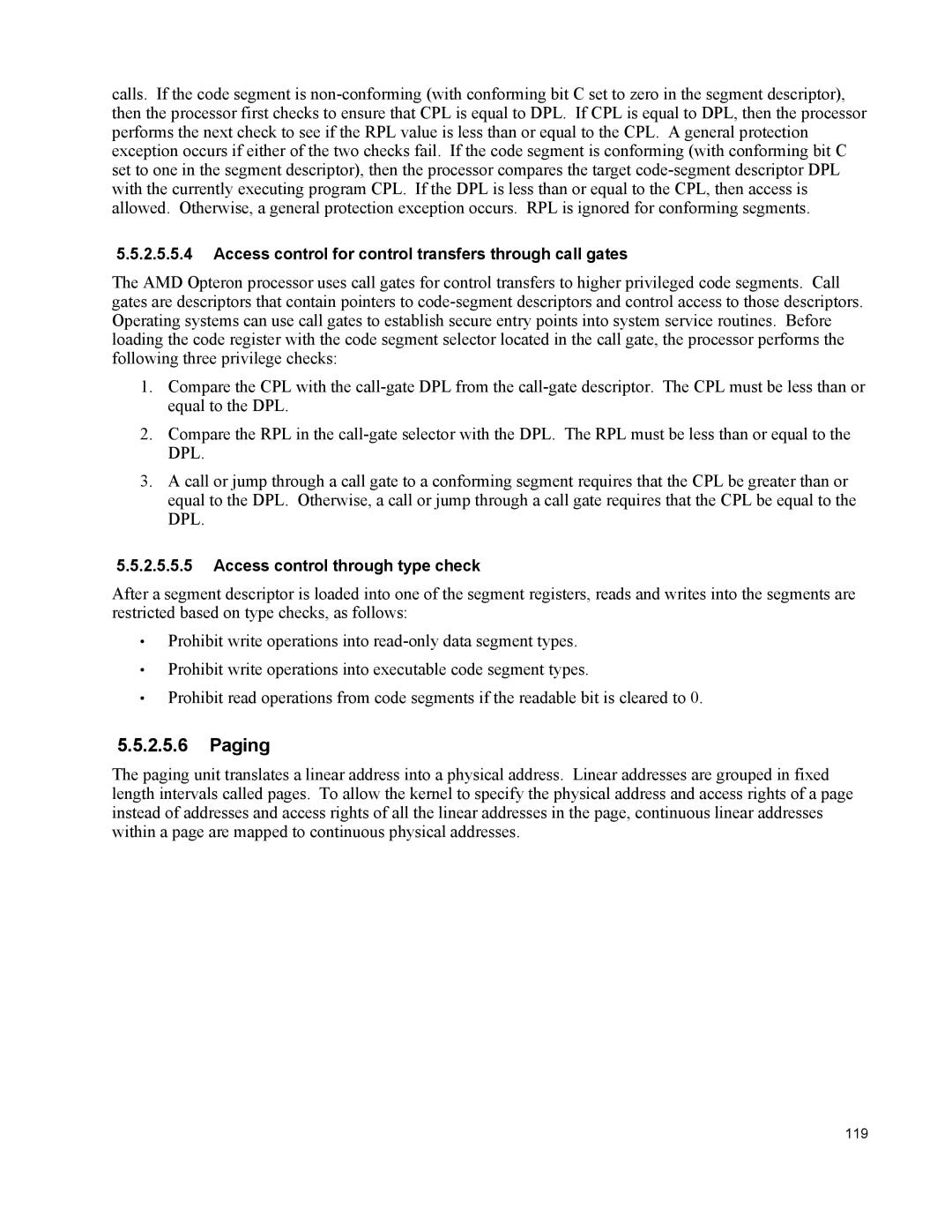calls. If the code segment is
5.5.2.5.5.4Access control for control transfers through call gates
The AMD Opteron processor uses call gates for control transfers to higher privileged code segments. Call gates are descriptors that contain pointers to
1.Compare the CPL with the
2.Compare the RPL in the
3.A call or jump through a call gate to a conforming segment requires that the CPL be greater than or equal to the DPL. Otherwise, a call or jump through a call gate requires that the CPL be equal to the DPL.
5.5.2.5.5.5Access control through type check
After a segment descriptor is loaded into one of the segment registers, reads and writes into the segments are restricted based on type checks, as follows:
•Prohibit write operations into
•Prohibit write operations into executable code segment types.
•Prohibit read operations from code segments if the readable bit is cleared to 0.
5.5.2.5.6Paging
The paging unit translates a linear address into a physical address. Linear addresses are grouped in fixed length intervals called pages. To allow the kernel to specify the physical address and access rights of a page instead of addresses and access rights of all the linear addresses in the page, continuous linear addresses within a page are mapped to continuous physical addresses.
119
